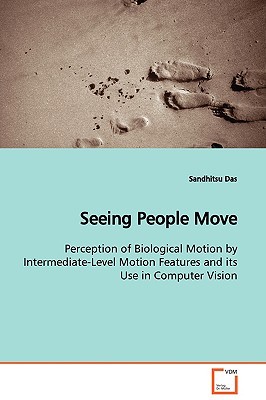
- We will send in 10–14 business days.
- Author: Sandhitsu Das
- Publisher: VDM Verlag
- ISBN-10: 3639098919
- ISBN-13: 9783639098914
- Format: 15.2 x 22.9 x 0.6 cm, softcover
- Language: English
- SAVE -10% with code: EXTRA
Seeing People Move Perception of Biological Motion by Intermediate-Level Motion Features and its Use in Computer Vision (e-book) (used book) | bookbook.eu
Reviews
Description
The human brain is adept at recognizing humans and animals in motion. The visual system effortlessly carries out many different tasks based on what we see. However, motion detection, particularly that of other animals and conspecifics, is one of the most important visual tasks the brain had to be good at from the perspective of evolution. Getting away from predators, hunting preys, and effective social interaction - all of these play crucial roles for survival of a species. The brain has therefore evolved to be extremely good at detecting these types of motions. However, little is known about the computational steps, or the neural mechanisms, that make this possible. In particular, it is unclear whether the mechanism is any different from other general purpose recognition tasks, or if there are specialized computational abstractions in use. In this book, analysis of human motion data and psychophysical experiments are used in an attempt to say something about what the brain might be doing while it executes the biological motion recognition task. It is further shown that knowledge gained through these experiments can also be used as a gait recognition tool in computer vision.
EXTRA 10 % discount with code: EXTRA
The promotion ends in 19d.18:08:32
The discount code is valid when purchasing from 10 €. Discounts do not stack.
- Author: Sandhitsu Das
- Publisher: VDM Verlag
- ISBN-10: 3639098919
- ISBN-13: 9783639098914
- Format: 15.2 x 22.9 x 0.6 cm, softcover
- Language: English English
The human brain is adept at recognizing humans and animals in motion. The visual system effortlessly carries out many different tasks based on what we see. However, motion detection, particularly that of other animals and conspecifics, is one of the most important visual tasks the brain had to be good at from the perspective of evolution. Getting away from predators, hunting preys, and effective social interaction - all of these play crucial roles for survival of a species. The brain has therefore evolved to be extremely good at detecting these types of motions. However, little is known about the computational steps, or the neural mechanisms, that make this possible. In particular, it is unclear whether the mechanism is any different from other general purpose recognition tasks, or if there are specialized computational abstractions in use. In this book, analysis of human motion data and psychophysical experiments are used in an attempt to say something about what the brain might be doing while it executes the biological motion recognition task. It is further shown that knowledge gained through these experiments can also be used as a gait recognition tool in computer vision.


Reviews